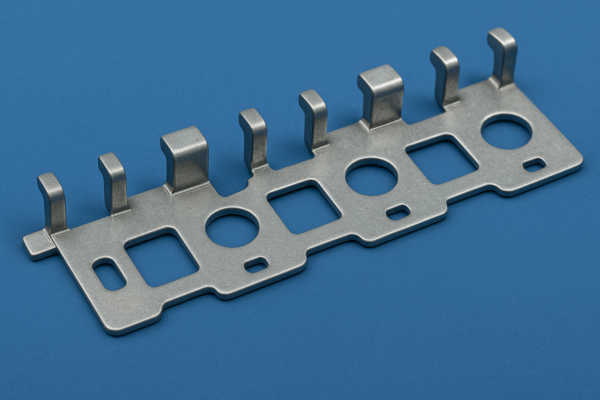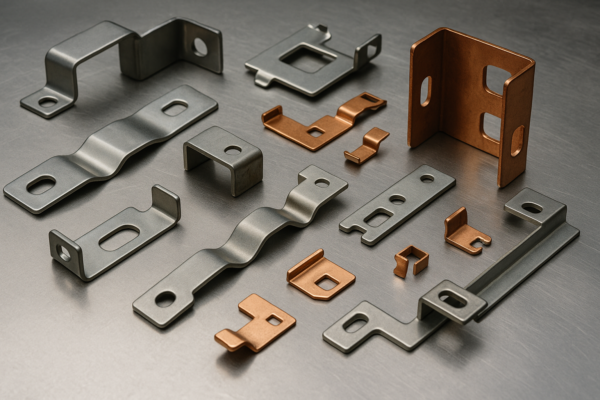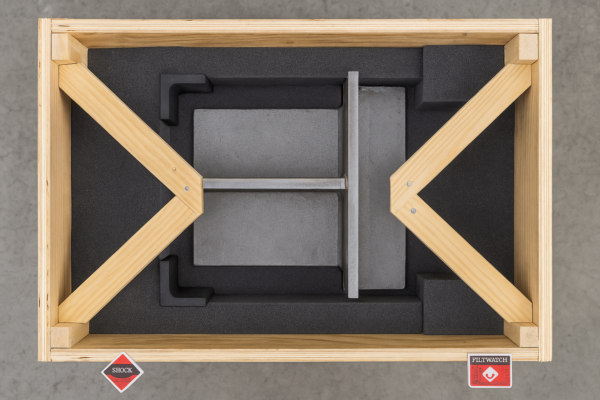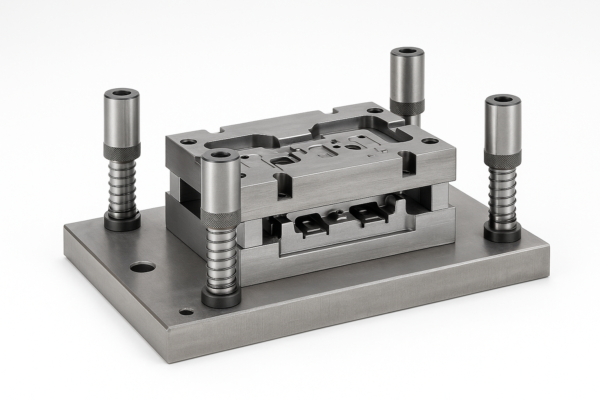How Does Prime Ensure Zero-Defect Metal Stamping Quality Control?

Struggling with inconsistent stamping quality? You’re not alone.
Metal stamping quality control ensures consistent, defect-free parts by integrating rigorous inspections and process controls throughout production.
Don’t let quality issues impact your bottom line—discover how Prime’s approach can help.
What Does Metal Stamping Quality Control Involve?
Jake (Automotive Procurement Director): I’ve worked with several stamping vendors, and quality inconsistency is my #1 pain point. Some batches meet tolerances; others miss critical dimensions. Can you tell me how Prime keeps stamping quality consistent?
Emma (Senior Quality Engineer at Prime): That’s a great question, Jake—and something we hear a lot. At Prime, we don’t treat quality as a checkpoint. It’s built into every stage of the process, from DFM to final inspection.
Jake: Let’s start simple. What does quality control in stamping actually include?
Emma: It’s a system. We plan, monitor, measure, and react to ensure every part meets exact standards. This includes:
- Design for manufacturability (DFM) reviews
- Process Failure Mode and Effects Analysis (PFMEA)
- In-process SPC (statistical process control)
- In-die sensors and poka-yoke mechanisms
- Final CMM inspection
- Traceable documentation and full batch history
We don’t guess—we measure everything.
Why Is Poor Quality So Costly?
Jake: I’ve had a supplier send 5,000 parts with burrs. Rework cost us time, trust, and budget.
Emma: Unfortunately, that’s common. Let’s look at the breakdown:
| Failure Type | Short-Term Cost | Long-Term Risk |
|---|---|---|
| Dimensional outliers | Rework, scrap | Field failures, lost clients |
| Cosmetic defects | Extra labor, delays | Reputational damage, lost RFQs |
| Missing documentation | Audit failure | Loss of preferred supplier status |
| Material inconsistency | Warranty costs | Safety recall, legal risk |
At Prime, we view poor quality as a silent profit leak.
How Does Prime Prepare Before Production?
Jake: So how do you prevent problems before parts are even produced?
Emma: Great question. Pre-production is critical.
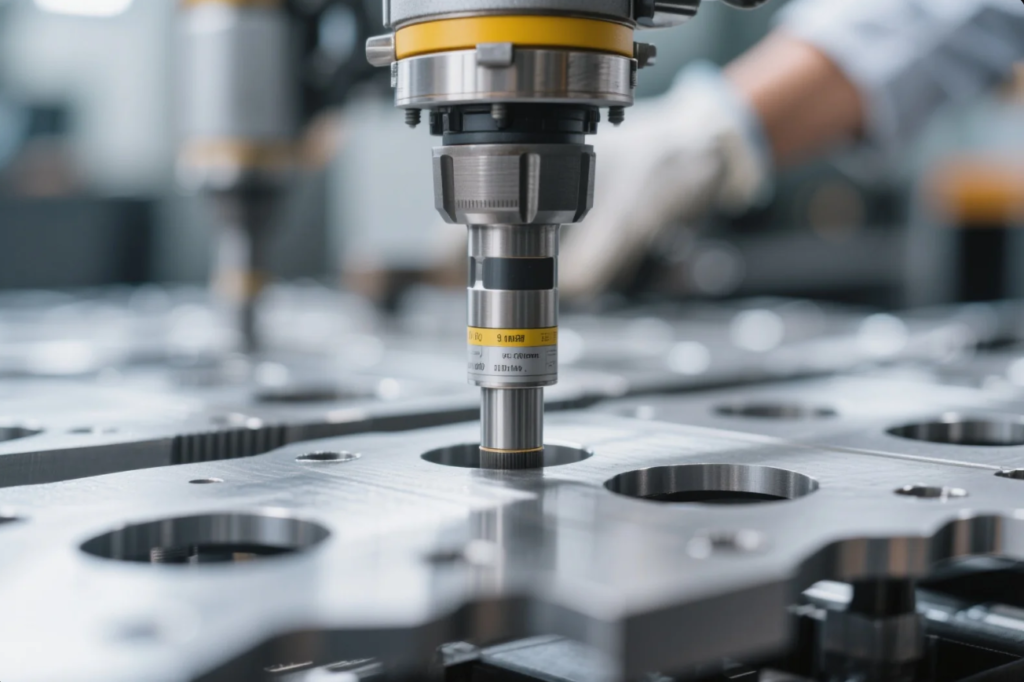
Our process includes:
- DFM review to spot tolerance and tooling risks
- PFMEA to prioritize and mitigate process failures
- Control plans to define inspection points and limits
- Gage R\&R studies to ensure our measurement tools are consistent
- Material cert verification before stamping begins
This prep reduces variation dramatically.
What Quality Controls Are in Place During Production?
Jake: Real-time production control is where most suppliers fall short.
Emma: At Prime, it’s our strongest point.
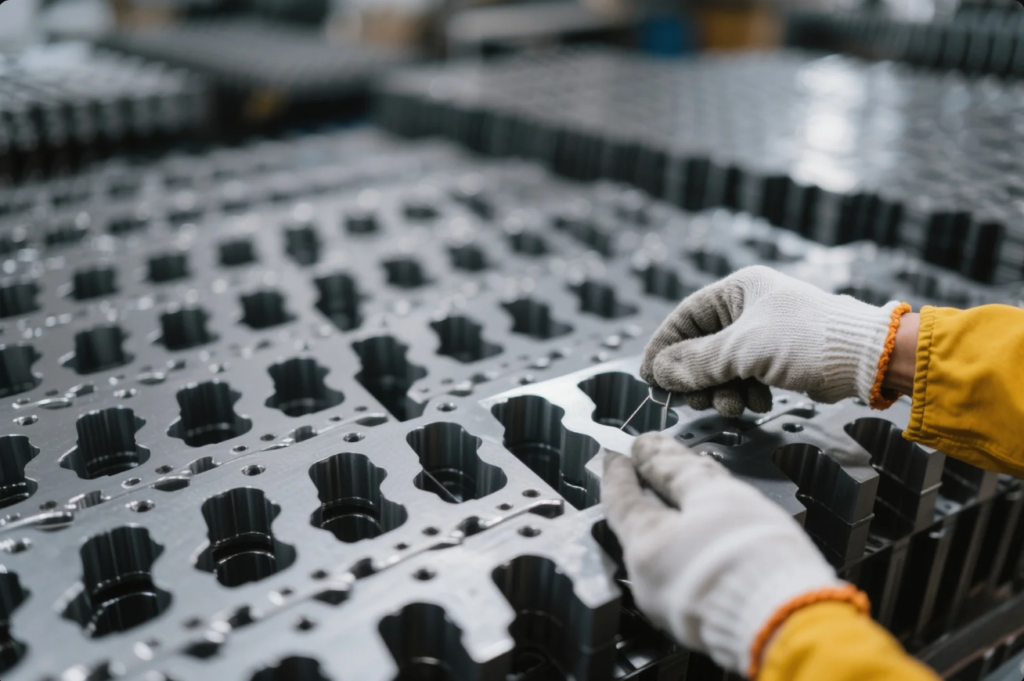
Here’s what we do:
- First Article Inspection (FAI): Full check of the first batch off the press
- SPC Monitoring: Real-time Cpk tracking on key dimensions
- In-die sensors: Detect feed errors, force anomalies, or misalignment
- Poka-yoke devices: Prevent operator errors and automate stops
We often stop the press before the defect even happens.
What Happens During Final Quality Checks?
Jake: And when the batch is done?
Emma: Then comes final inspection.

We use:
- CMM machines for complex profiles
- Go/No-Go gauges for fast inspection
- Surface checks under standard lighting
- Hardness and coating tests
- Lot-based traceability linking each part to its tool, operator, and settings
You get clean, documented results with every shipment.
Is Continuous Improvement Just a Buzzword?
Jake: Many say “continuous improvement.” Few actually do it.
Emma: We do. And we prove it.
Here’s how:
- Monthly Kaizen events targeting top scrap contributors
- Cpk audits to identify weak processes
- Root cause analysis using 5-Why and fishbone
- Scrap tracking dashboards
- Employee reward system for zero-defect production
In one year, we reduced client PPM by over 80%.
What Certifications Support Prime’s Quality Control?
Jake: My clients require ISO and PPAP. Can you support that?
Emma: Absolutely. We’re certified to ISO 9001:2015, and we operate per IATF 16949 guidelines. We can also deliver:
- Full PPAP packages (Level 1–5)
- Material certs with RoHS/REACH compliance
- 8D reports with corrective actions
- Gauge calibration logs
We pass Tier 1 audits regularly.
How Can You Evaluate a Stamping Supplier’s Quality Control?
Jake: If I’m comparing vendors, what should I ask?
Emma: Great question. Ask for:
- Their Cpk scores for similar parts
- A sample control plan
- Evidence of SPC usage
- A virtual plant tour showing sensor setups
- Documentation of their last corrective action
- A record of first-pass yield over 6 months
If they hesitate—it’s a red flag.
FAQs on Metal Stamping Quality Control
Jake: Emma, can you answer some common questions about metal stamping quality control?
Emma: Of course, Jake. Let’s go through them.
Jake: What is metal stamping quality control?
Emma: Metal stamping quality control is a systematic process to ensure that stamped metal parts meet specified standards and tolerances. It involves inspections, testing, and process monitoring to detect and prevent defects.
Jake: Why is quality control important in metal stamping?
Emma: Quality control ensures product reliability, reduces waste, and maintains customer satisfaction. It helps in identifying issues early, saving time and costs associated with rework or recalls.
Jake: What are common methods used in metal stamping quality control?
Emma: Common methods include:
- Visual inspections for surface defects
- Dimensional checks using calipers and CMMs
- Material testing for hardness and composition
- Statistical Process Control (SPC) to monitor production consistency
Jake: How does Prime implement quality control in metal stamping?
Emma: At Prime, we integrate quality control at every stage:
- Pre-production: DFM reviews, PFMEA, and material verification
- In-process: Real-time SPC, in-die sensors, and poka-yoke systems
- Post-production: Final inspections with CMMs and traceability documentation
Jake: What certifications support Prime’s quality control processes?
Emma: We are certified to ISO 9001:2015 and follow IATF 16949 standards. We also provide full PPAP documentation, material certifications, and 8D reports as needed.
Conclusion
Jake: Emma, this gives me confidence. Your team seems proactive, not reactive.
Emma: That’s exactly what we aim for. We help customers sleep at night, not chase problems during production.
📩 Ready to experience zero-defect stamping?
Contact Prime Custom Parts today for a free DFM review, quote, or sample inspection report.
📧 Email: [email protected]
🌐 Website: https://primecustomparts.com

